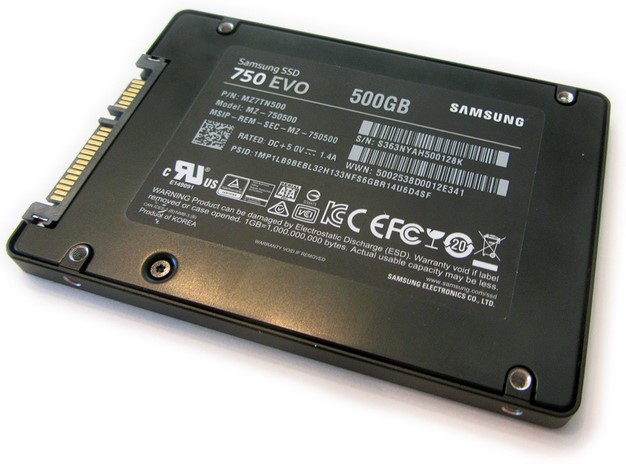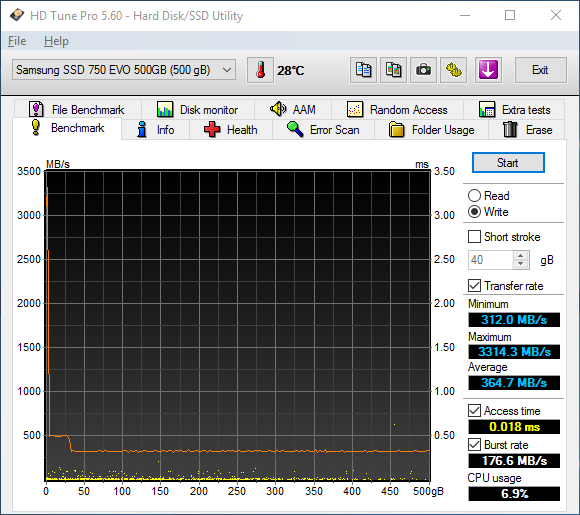Samsung SSD 750 EVO SATA Solid State Drive Review
The Samsung SSD 850 EVO has become somewhat of a yardstick, by which other SATA-based SSDs are measured, and not without good reason. It set a very high bar when we reviewed it more than a year-and-a-half ago and it still holds up against newer products.
Samsung has also come out with a newer drive series, the SSD 750 EVO, that sits one step below the 850 EVO in the company's line-up and is meant to be more affordable while still offering competitive performance. And by and large, it holds up in our tests as you'll see a little later.
|
Model Code (Capacity)
FORM FACTOR
INTERFACE
DIMENSION (WXHXD)
WEIGHT
STORAGE MEMORY
CONTROLLER
CACHE MEMORY
Special Feature
OPERATING TEMPERATURE
|
Performance SEQUENTIAL READ
SEQUENTIAL WRITE
AVERAGE POWER CONSUMPTION
POWER CONSUMPTION (IDLE)
RELIABILITY (MTBF)
|

Find The Samsung SSD 750 EVO @ Amazon.com
The 750 EVO also has a 256MB DRAM cache (512MB on the 500GB drive) and the Samsung MGX controller, AES 256 encryption and a 1.5 MTBF rating. The warranty is for three years as well. These specs pretty much all match the 850 EVO.
In addition to some firmware tweaks, the main difference is the type of NAND used. So why are the specs so similar? The legacy SATA interface is the equalizer. Even today's more affordable solid state drive offerings are bumping into the limitations of the interface.

On the outside, there is another difference from the 850 EVO. The 750 EVO is largely made of plastic, making it very lightweight. It weighs just 45g, compared to 66g for the 1TB version of the 850 EVO.
Like its older brothers, the 750 EVO features the same dual-core Samsung MGX controller. The 850 Pro series has a triple core chip, but Samsung removed one core to save power because that extra core didn't help performance much on the lower capacity drives.

Another technology incorporated from older drives is TurboWrite, which uses a small portion of the NAND like an SLC write buffer. This allows the TLC NAND to perform more like a MLC drive for writes, giving write performance a massive bump. The 750 EVO also supports Samsung RAPID mode, via the included Magician utility. RAPID uses a portion of system RAM as an ultra-fast data cache. As this screencap of HD Tune Pro shows, writes are much faster when RAPID and the TurboWrite buffer is being utilized.






